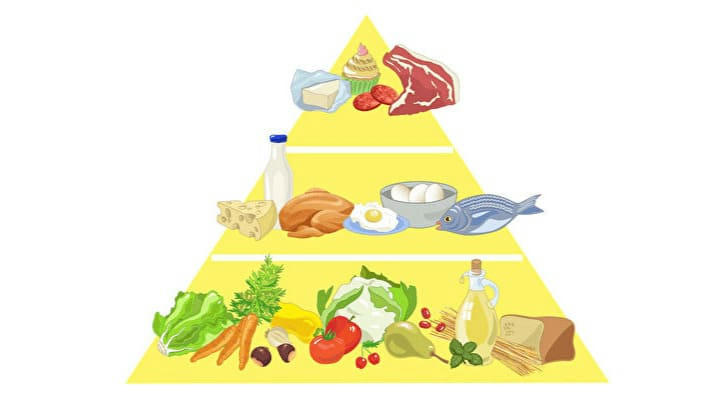How to Build a Balanced Plate: A Guide to Creating a Nutritious Diet
A balanced diet is vital for maintaining overall health and well-being, as it provides the body with essential nutrients needed for optimal function. By incorporating a variety of foods from all food groups—carbohydrates, proteins, fats, vitamins, and minerals—individuals ensure they receive a comprehensive range of nutrients.
Carbohydrates, for instance, are crucial as they supply the body with energy, fueling daily activities and bodily functions. Including sources like whole grains, fruits, and vegetables helps in sustaining energy levels, supporting metabolism, and promoting overall health. A balanced diet not only supports physical health but also enhances mental and emotional well-being.
Understanding the Components of a Balanced Plate
The role and sources of carbohydrates
Carbohydrates are a primary energy source for the body, fueling essential functions and physical activity. They are broken down into glucose, which is used by cells for energy. Carbohydrates also support brain function and help maintain blood sugar levels. Key sources include whole grains (like brown rice and oats), fruits (such as apples and berries), vegetables (like sweet potatoes and leafy greens), and legumes (including beans and lentils). Choosing complex carbohydrates, which are high in fiber and nutrients, over simple sugars helps sustain energy levels and supports overall health.

The necessity and sources of proteins
Proteins are vital for building and repairing tissues, producing enzymes and hormones, and supporting immune function. They are essential for muscle growth and repair, and they provide a source of energy when needed. Key sources of protein include lean meats (such as chicken and turkey), fish, eggs, dairy products (like yogurt and cheese), and plant-based options like legumes (beans and lentils), nuts, seeds, and tofu. Incorporating a variety of protein sources ensures a balance of essential amino acids and supports overall health and bodily functions.

The benefits and sources of healthy fats
Healthy fats, such as those in avocados, nuts, and olive oil, offer essential benefits. They improve heart health by boosting HDL cholesterol and lowering LDL cholesterol.
These fats also reduce inflammation, support brain function, and aid in the absorption of fat-soluble vitamins (A, D, E, K). Sources include avocados, which are rich in monounsaturated fats; nuts, packed with omega-3 fatty acids; and olive oil, known for its anti-inflammatory properties. Incorporating these into your diet can enhance overall health, support cognitive function, and contribute to better weight management.

The significance of vegetables and fruits
Vegetables and fruits are crucial for health as they provide essential vitamins, minerals, and antioxidants that support immune function, reduce inflammation, and protect against chronic diseases. They are high in dietary fiber, which aids digestion and helps maintain healthy blood sugar levels. Their low calorie and high nutrient density make them key for weight management. Regular consumption of a variety of vegetables and fruits promotes overall well-being and supports optimal bodily functions.

Portion Control and Plate Division
Guidelines for portion sizes and visual tips for plate arrangement
Portion sizes are crucial for managing calorie intake and maintaining a healthy weight. Guidelines recommend filling half your plate with fruits and vegetables, a quarter with whole grains, and the remaining quarter with lean proteins. For fats and oils, a tablespoon is a standard serving size. These guidelines help ensure that you get the right balance of nutrients without overeating.
Practical Steps for Creating a Balanced Diet

Planning meals ahead
Planning Meals Ahead: A Streamlined Approach
Select recipes, create a shopping list, and prep ingredients in advance. Dedicate time to cook in batches, store meals in portion-controlled containers, and schedule them throughout the week.
Shopping for a balanced diet: A Step-by-Step Guide
Before shopping, plan meals based on a balanced diet, including fruits, vegetables, whole grains, lean proteins, and healthy fats. Make a shopping list to avoid impulse buys. Be mindful of portion sizes and avoid overspending on large quantities.
Preparing balanced meals
For balanced meals, use cooking techniques like grilling, steaming, or baking to retain nutrients. Season with herbs and spices instead of salt to enhance flavor. Use healthy oils like olive oil in moderation. This approach maintains nutrient integrity and adds taste without excess calories or sodium.
Snacking smartly
Choose nutrient-dense snacks like nuts, yogurt, or fruits. Limit processed foods and opt for whole foods. Plan snacks to avoid overeating and keep portions controlled. Snacking smartly can maintain energy levels and prevent overindulgence during meals.
Special Dietary Considerations
Dealing with Picky Eaters: Introduce new foods gradually, alongside familiar favorites. Involve picky eaters in meal planning and preparation to increase interest. Offer choices within healthy parameters, and model good eating habits. Avoid using food as a reward or punishment. Create a positive eating environment and be patient, giving repeated exposure to new foods.
This approach respects individual preferences while encouraging a balanced diet, ensuring all family members, including picky eaters, enjoy a variety of nutrients essential for health.
Managing Busy Schedules: Prioritize meals by preparing them in advance or opting for quick, healthy options like salads, wraps, or leftovers. Use meal planning apps to streamline grocery shopping and cooking. Incorporate batch cooking on weekends to have ready-to-eat meals during the week. Keep healthy snacks on hand to avoid unhealthy impulse eating. Utilize time-saving kitchen gadgets and delegate meal preparation tasks when possible.
Conclusion
Recap of key points
A balanced diet, crucial for health and well-being, involves incorporating diverse nutrients. Key components include carbohydrates for energy, proteins for repair and growth, healthy fats for heart health, and fruits/vegetables for vitamins and minerals. Dairy or alternatives supply calcium and vitamin D. Portion control and plate division, planning meals, smart shopping, balanced meal preparation, and mindful snacking are essential strategies. Special considerations for picky eaters and managing busy schedules ensure dietary goals are met.
Encouragement for dietary experimentation
Embrace curiosity, start small with new ingredients or cuisines, and set realistic goals. Seek inspiration from cookbooks or online, and make it fun by involving friends or family. Celebrate successes to build confidence and expand palate gradually
Final thoughts on the journey to a healthier lifestyle
Embracing a healthier lifestyle is a progressive journey, not a destination. Consistency, patience, and a positive mindset are key. Celebrate small victories, learn from setbacks, and stay adaptable. Remember, every healthy choice is a step forward in your personal evolution towards well-being.
